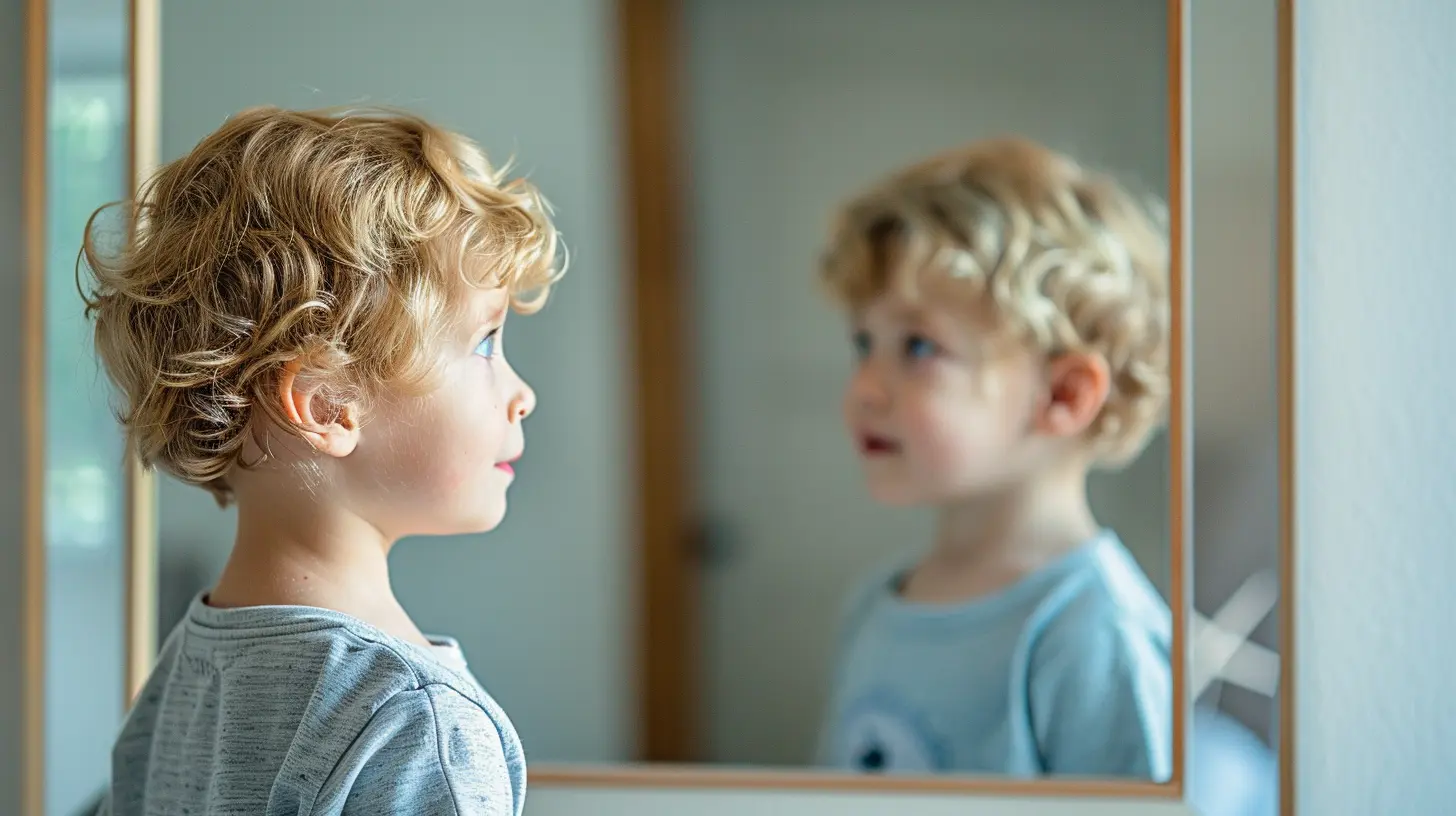How to Foster a Positive Body Image in Your Child
11 October 2025
Body image. It’s one of those things we don’t talk about enough—but it’s everywhere. It’s in the mirror, in the media, in what people say (and don’t say). And when it comes to kids? It starts way earlier than you might think.
If you’re a parent or caregiver, you’ve probably wondered how much impact your words have when your child looks at themselves. Spoiler alert: your voice becomes their inner voice.
So, how do you guide your child toward loving their body without turning it into one more thing they feel judged about? Let’s unpack it together.

What Is Body Image, Really?
Before we dive in, let’s get clear on what body image actually means.At its core, body image is how a person sees, thinks, and feels about their own body. It’s not just about weight or size—it’s about hair, skin, height, clothing, how you walk, how you stand, and even how you compare yourself to others.
Here’s the tricky part: a child can look healthy on the outside, but still struggle with body image on the inside.
That’s why it’s so important to actively help build a positive and healthy relationship between your child and their body—starting young.

Why Early Messages Matter
Kids pick up on way more than we realize. Every comment, sigh, glance in the mirror—you better believe they’re soaking it up like a sponge.The way we talk about bodies (ours and others’) becomes their language. If a child hears you criticizing your own appearance, they learn that bodies are things to be judged. If they hear constant praise only when someone loses weight or looks “cute,” guess what sticks?
It’s not about being perfect—it’s about becoming mindful.

Signs Your Child Might Be Struggling With Body Image
Sometimes it’s obvious. Other times, not so much.Here are a few red flags to watch for:
- They constantly compare themselves to peers or people online
- They avoid activities due to how they look
- They express shame or frustration about their body
- They speak negatively about food or start labeling it as “good” or “bad”
- They obsess over clothing, hairstyles, or angles in photos
If you’re seeing these signs, don’t panic. These are common and often reversible. You’re not failing—just facing an opportunity to help.

1. Be a Body-Positive Role Model
You don’t have to be a body image guru to set a good example. You just need to show your kids what self-acceptance looks like in real life.Let’s start with this: how do you talk about your own body around your child?
Do you complain about your weight at the dinner table? Do you groan when trying on clothes and say things like, “Ugh, I hate how I look”? Your child is listening.
Instead of fixating on looks, shift the focus to what your body can do. Something like, “I love that my legs are strong enough to take us on hikes,” sends a much healthier message.
Kids don’t need parents with perfect bodies—they need parents who treat their bodies with respect.
2. Focus on Health, Not Size
There’s a huge difference between encouraging a healthy lifestyle and policing your child’s weight.Talk about health in terms of energy, strength, and feeling good. Not pounds, inches, or skinny jeans.
For example:
- Swap “This food is unhealthy” with “Let’s eat something that gives us energy for the day.”
- Replace “You should exercise more to lose weight” with “Let’s go for a walk to stretch and feel better.”
This helps children build a relationship with food and movement that isn’t rooted in guilt or self-punishment.
3. Encourage Media Literacy Early On
Instagram filters, Photoshop, TikTok beauty trends—it’s a minefield out there. And kids are walking through it without a map.So, teach them to question what they see.
Point out that most images are edited. Show them how lighting and angles can totally change how someone looks. Talk openly about how social media often promotes unrealistic standards.
You can even make it fun! Try comparing before-and-after photoshoots or showing them how filters change faces. Make it a game: “Can you spot the edit?”
The goal here isn’t to bash beauty culture—it’s to help your child think critically and protect their self-worth.
4. Celebrate Diversity in Appearance
Not all bodies look the same, and thank goodness for that.Make sure your kids know that beauty doesn’t come in a single shape, skin tone, or size. Look for books, shows, and toys that showcase a variety of bodies and cultures. Comment positively when you notice diverse representations.
Let them hear you say: “Isn’t it cool how everyone looks different? That’s what makes people interesting.”
You’re planting seeds that will grow into deep-rooted self-acceptance.
5. Compliment More Than Their Looks
It’s natural to want to tell your child how cute or beautiful they are. And sure, go ahead and say it—but don’t stop there.Balance your compliments with praise about:
- Their kindness
- Their curiosity
- Their creativity
- Their courage
- Their problem-solving skills
Kids thrive on affirmation. If they only hear that they’re “pretty,” they may start thinking that’s all that matters.
Want them to value who they are over how they look? Then be specific in how you recognize their character.
6. Create a Safe Space to Talk
Your child will have questions—about their body, about other kids’ bodies, about what they see on YouTube or at school.When they come to you, don’t shut them down with “Don’t worry about that” or “You’re fine.” These brush-offs might seem kind, but they can make kids stop opening up.
Instead, try responses like:
- “Thanks for telling me how you feel. Can you say more about that?”
- “I get that this is hard. Lots of people struggle with the same thing.”
- “Your body is changing, and that can be confusing. I’m always here to talk.”
Normalize conversations about all bodies—including the awkward stuff. That safe space? It makes all the difference.
7. Watch Your Language About Food and Exercise
Language matters. A lot.If you’ve ever said “I was so bad today—I ate ice cream,” or “I have to work off this pizza,” you’re not alone. But those comments send the message that food is something to earn or punish yourself for.
Here’s a better script:
- “I enjoyed that dessert—it made me smile.”
- “Let’s move our bodies today to feel strong and clear-headed.”
- “All foods have a place. Some give us energy. Some give us joy.”
Remember: food isn’t moral. It doesn’t make you good or bad. Teaching this helps your child develop a neutral, healthy relationship with eating.
8. Don’t Tie Worth to Achievement
This one’s subtle, but powerful.Be careful not to tie your child’s worth to how well they perform—whether it's sports, school, or even their appearance.
When kids feel they have to “earn” love or praise, they begin to believe they’re only as good as their last performance or perfect selfie.
Instead, reinforce the idea that they are valuable just as they are. Not when they win. Not when they’re looking a certain way. Every moment, every day.
9. Teach Emotional Coping Skills
Sometimes body image struggles are really just emotions in disguise.If your child is feeling anxious, sad, or socially isolated, they might channel those feelings into their body image. It’s not about the body—it’s about control, or belonging, or insecurity.
Help your child build tools for dealing with big feelings:
- Journaling
- Deep breathing
- Talking to trusted adults
- Creative outlets like music or drawing
- Time outdoors
These coping skills give them healthy alternatives to self-criticism.
10. Know When to Ask for Help
If your child’s negative body image is persistent, worsens over time, or starts affecting their daily functioning, don’t ignore it. There’s no shame in reaching out.Consider talking to:
- A pediatrician
- A licensed therapist (especially one experienced in eating disorders or self-esteem work)
- A school counselor
Early intervention can prevent deeper struggles down the road. You are your child’s advocate—and sometimes that means asking for backup.
Final Thoughts
Fostering a positive body image in your child isn’t about shielding them from the world. It’s about equipping them to live in it with confidence, resilience, and a deep sense of self-worth.You won’t get it perfect. No one does. But every small, conscious step you take matters. Every kind word, every thoughtful conversation, every moment you choose acceptance over criticism—it adds up.
Your child is listening. Watching. Learning.
Let them know, through your words and your actions, that they are already enough.
all images in this post were generated using AI tools
Category:
ParentingAuthor:

Paulina Sanders
Discussion
rate this article
1 comments
Graham Wolfe
Great tips! It’s amazing how a little positivity can turn 'I don’t like my legs' into 'Check out my awesome running skills!' Remember, a healthy body image starts with loving our quirks—like the way I can eat a whole pizza and still fit in my jeans!
October 29, 2025 at 3:57 PM

Paulina Sanders
Thank you! Embracing our unique traits fosters confidence and self-love, which is crucial for a positive body image in children. Keep sharing that positivity!


